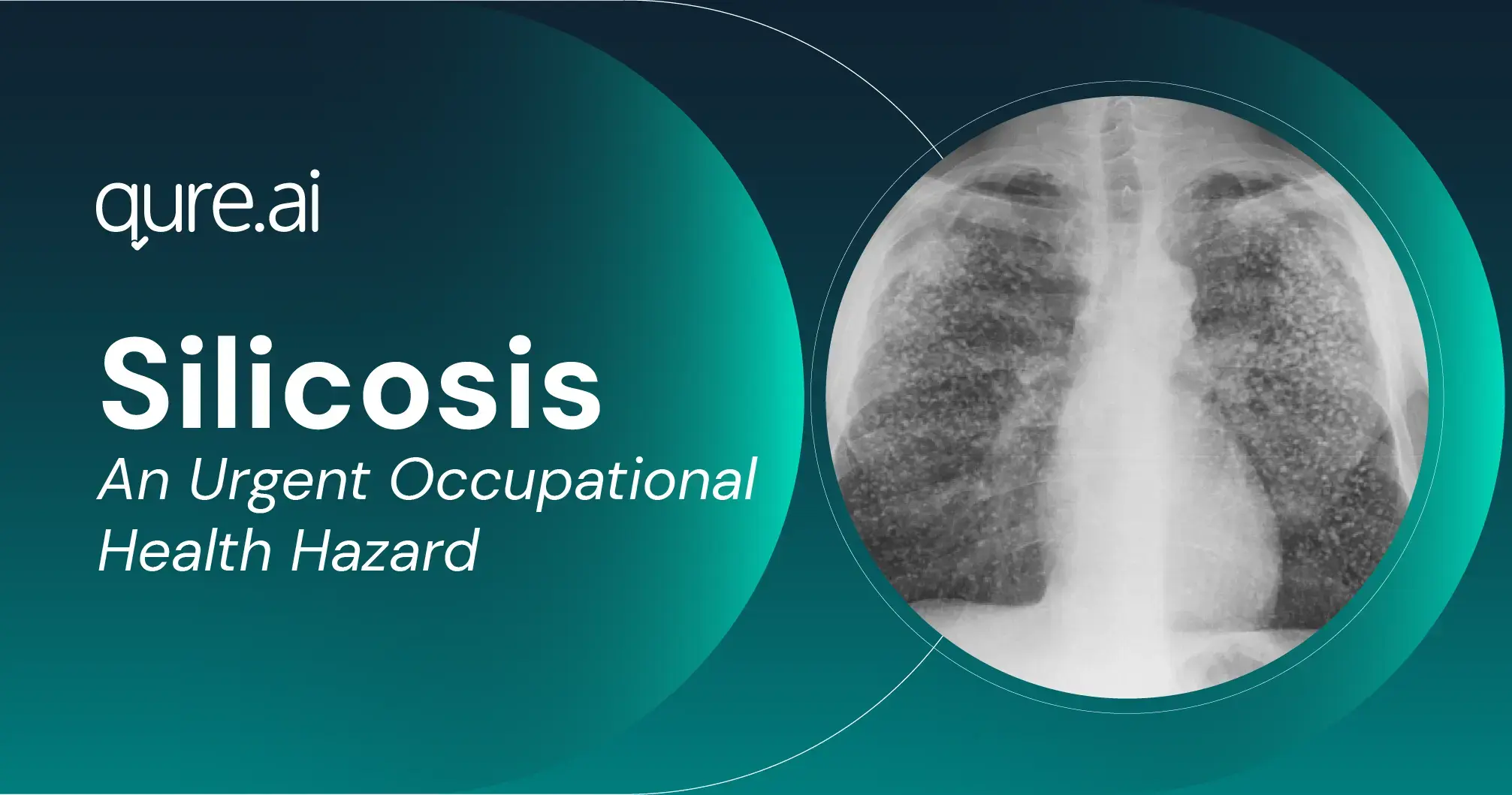Key Highlights
Back
- Global Silicosis Impact: Affects 38 million workers globally, with 230,000 new cases and over 10,000 deaths annually.
- Severity and Incurability: Causes severe lung damage, respiratory failure, and heightened infection risk; early diagnosis is vital as it’s incurable.
- Radiologist Shortage: A global deficit of radiologists, especially in low-income countries, delays accurate lung disease diagnoses.
- AI Screening Tools: AI enhances speed and accuracy in diagnosing silicosis, alleviating radiologist shortages.
- Preventive Measures in Mining: Mining companies use aspects of engineering like ventilation, respirators, and training to reduce silica dust exposure, though implementation is challenged by high costs and lack of awareness.
Introduction
Silicosis is a debilitating and often fatal lung disease caused by inhaling fine particles of crystalline silica, commonly found in industries such as mining, construction, and manufacturing. According to the World Health Organization (WHO), around 38 million workers worldwide are exposed to silica dust, and approximately 230,000 new cases of silicosis are diagnosed each year globally. This disease is particularly prevalent in countries with significant industrial activities, such as China, India, South Africa, and the United States.
The Danger of Silicosis
Silicosis is a severe occupational health hazard that poses significant risks to workers. The inhalation of silica dust leads to inflammation and scarring of lung tissue, resulting in impaired lung function and reduced quality of life. The disease can progress to severe respiratory failure and increases the risk of other lung infections, including tuberculosis (TB). The International Labour Organization (ILO) estimates that silicosis causes more than 10,000 deaths annually worldwide. Additionally, the economic burden of silicosis is substantial, with healthcare costs and lost productivity amounting to billions of dollars each year.
Incurability and the Need for Early Diagnosis
Silicosis is currently incurable, making early detection and intervention critical. The disease progresses in stages, which may include acute silicosis, which can develop within a few months of high exposure to silica dust, accelerated silicosis and chronic silicosis, which is the most commonly encountered stage. Early diagnosis allows for timely medical intervention, such as removing the worker from exposure and providing supportive treatments to slow disease progression. Without early diagnosis, workers are at risk of rapid deterioration and severe health complications.
Lung Health Disease and the Radiologist Shortage
AI Solutions: The Role of AI-Powered Screening Tools
Given the shortage of radiologists and the complexity of diagnosing silicosis, AI solutions have emerged as vital tools in healthcare. AI-powered chest X-ray screening tools can analyse medical images with remarkable accuracy and speed, identifying patterns and anomalies that may be indicative of various lung conditions, including silicosis. These tools are designed to detect signs of lung diseases such as tuberculosis and lung cancer, but they can also incidentally identify features suggestive of silicosis, such as nodules, fibrosis, and other abnormalities.
AI algorithms are trained on vast datasets of annotated medical images, enabling them to recognize subtle signs of disease that might be missed by human eyes, especially in the early stages. These tools can provide preliminary diagnoses or flag suspicious cases for further review by radiologists, thus enhancing the diagnostic process and reducing the workload on healthcare professionals.
For instance, in occupational health screenings where workers are regularly tested for lung diseases, AI-powered tools can serve as a first line of defence, ensuring that potential cases of silicosis are not overlooked. By integrating these AI solutions into routine healthcare practices, it is possible to achieve more timely and accurate diagnoses, which is crucial for early intervention and better health outcomes for workers at risk.
Way Forward
Addressing the challenge of silicosis requires a multifaceted approach. Governments and industries must enforce stringent occupational safety regulations to minimize silica dust exposure. At present, several mining companies do take precautionary measures to prevent silicosis among their workers:
- Many mining companies are implementing engineering controls to limit the release of silica dust into the air, such as using water spray systems to wet down drilled rock and applying chemicals to underground walls to cause dust to stick. These measures help reduce the amount of dust that miners are exposed to.
- Proper ventilation systems are being used to keep silica dust away from miners' breathing zones. Ventilation is considered one of the most effective engineering controls for preventing silicosis.
- Mining companies are providing workers with approved particulate respirators when engineering controls alone are not sufficient to keep silica exposures below safe levels. Respirators must be properly fitted and maintained to be effective.
- Some mining companies are substituting less hazardous materials than crystalline silica for abrasive blasting when possible. This helps eliminate the silica dust hazard at the source.
- Miners are being trained on the health effects of silica dust exposure, the importance of engineering controls and work practices to reduce dust, and the proper use of respirators. Training is critical for ensuring controls are used effectively.
- Medical examinations are being provided to miners exposed to silica dust, as recommended by NIOSH. This allows for early detection of silica-related health effects.
However, challenges remain in fully implementing these preventive measures, such as the high cost, lack of awareness, and underreporting of silicosis cases. Continued efforts by mining companies, regulators, and workers are needed to eliminate this preventable occupational disease.
Increasing investment in healthcare infrastructure and training more radiologists are essential steps to address the current shortage. Furthermore, integrating AI solutions into routine diagnostic practices can significantly enhance early detection and improve patient outcomes. By combining these strategies, we can mitigate the impact of silicosis and protect the health of workers globally.
References
World Health Organization (WHO). Silicosis: Global burden and epidemiology (WHO)
International Labour Organization (ILO). Silicosis: A major occupational health issue. (ILO)
